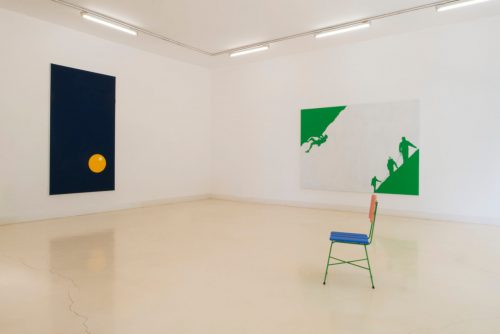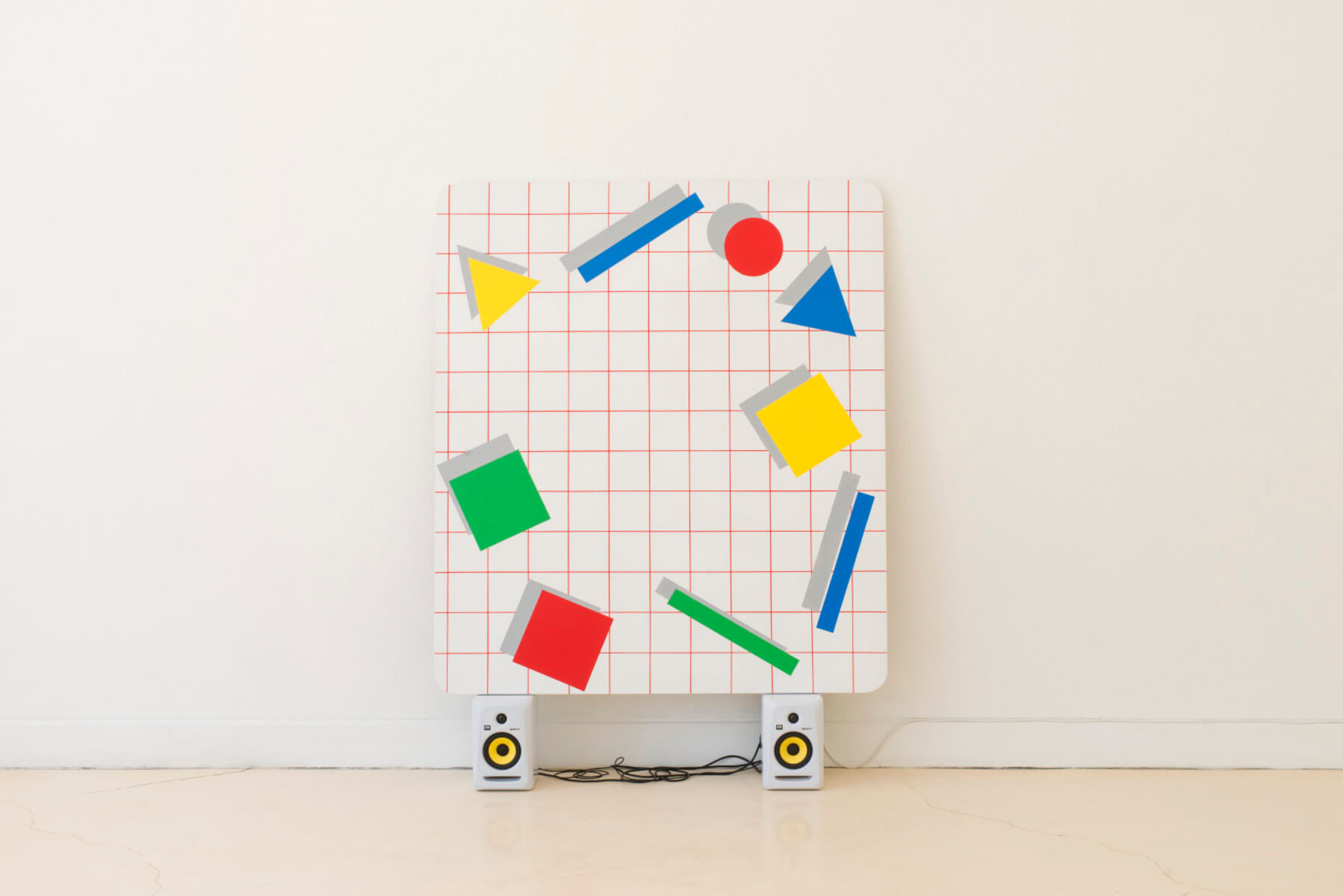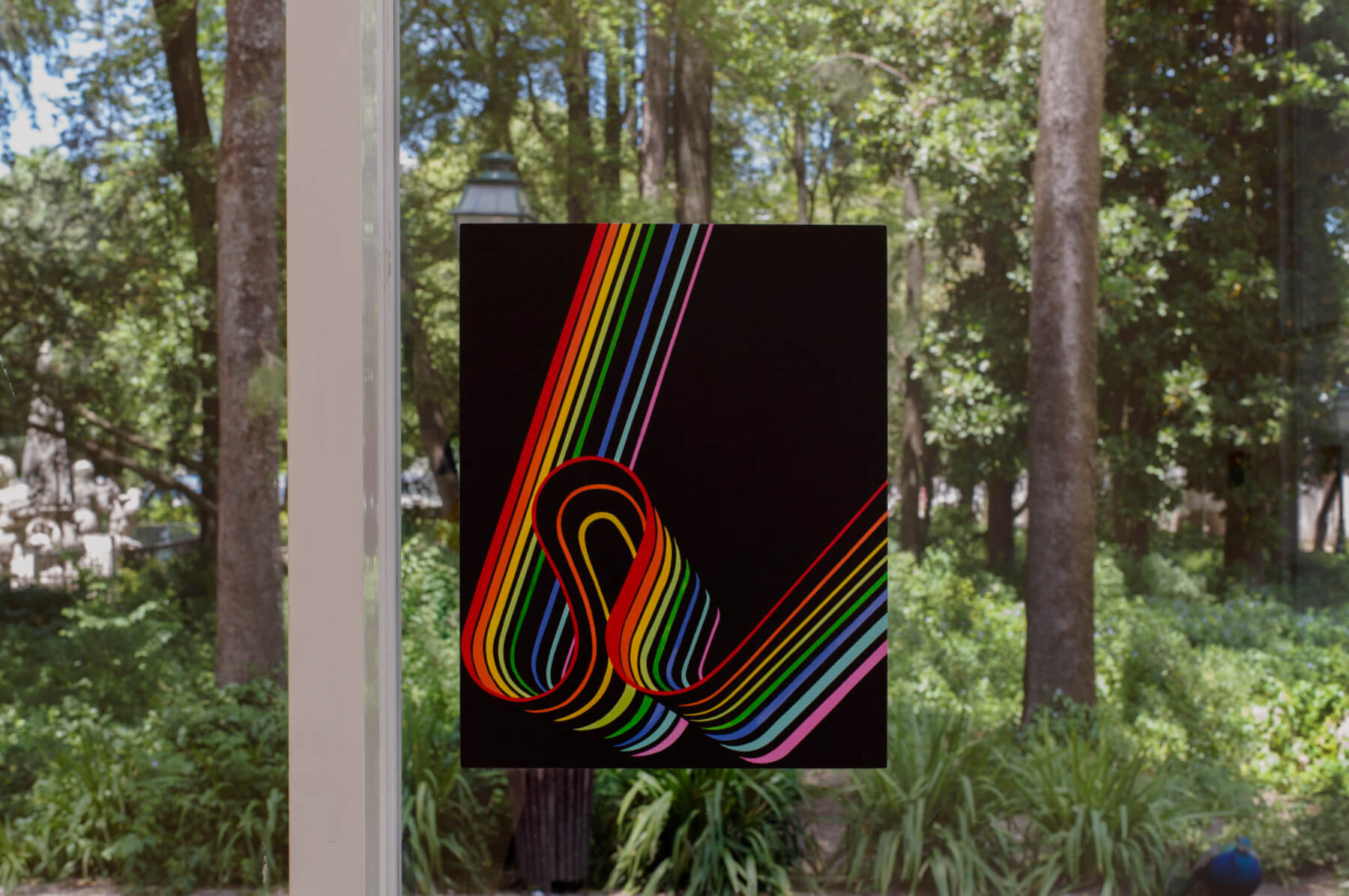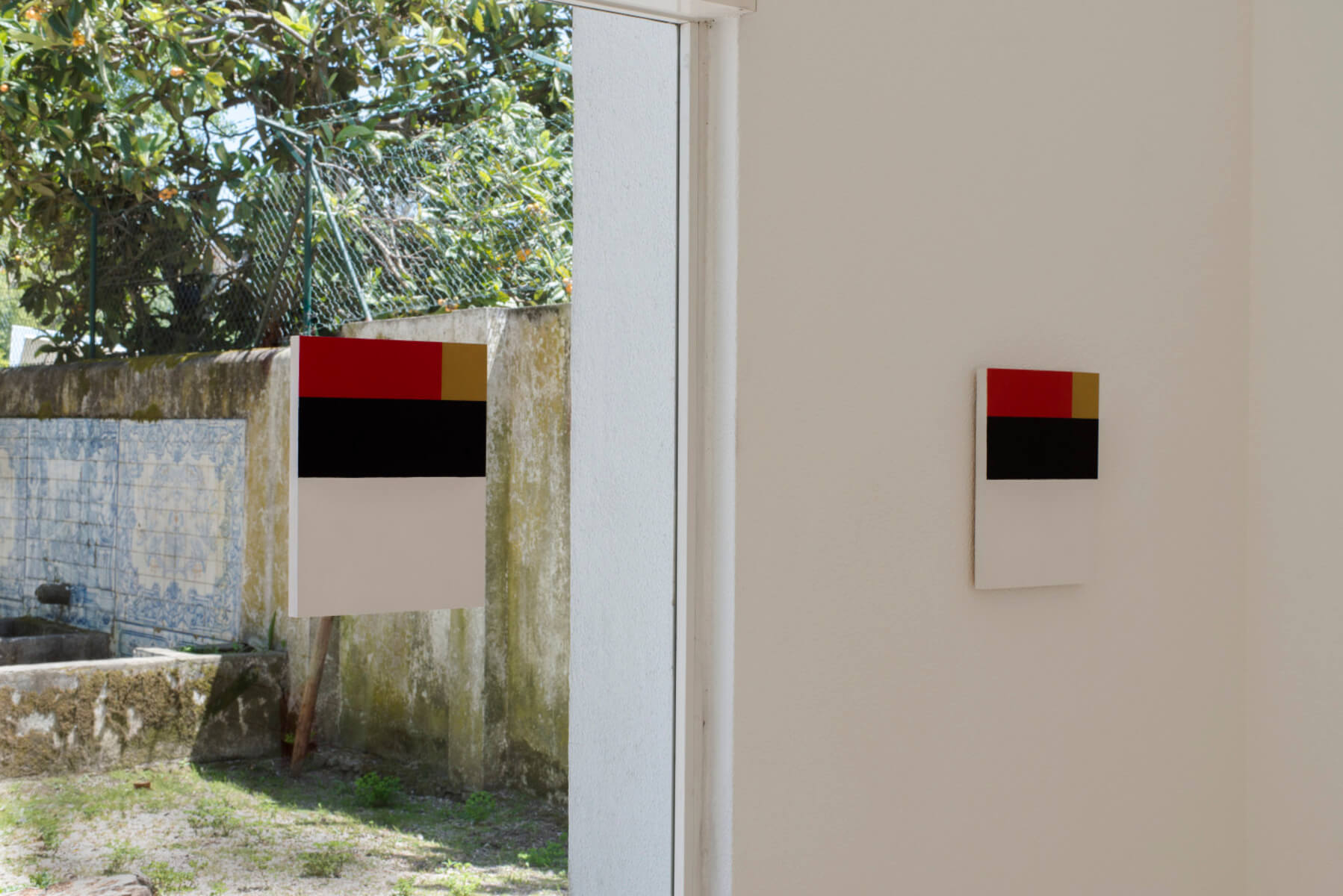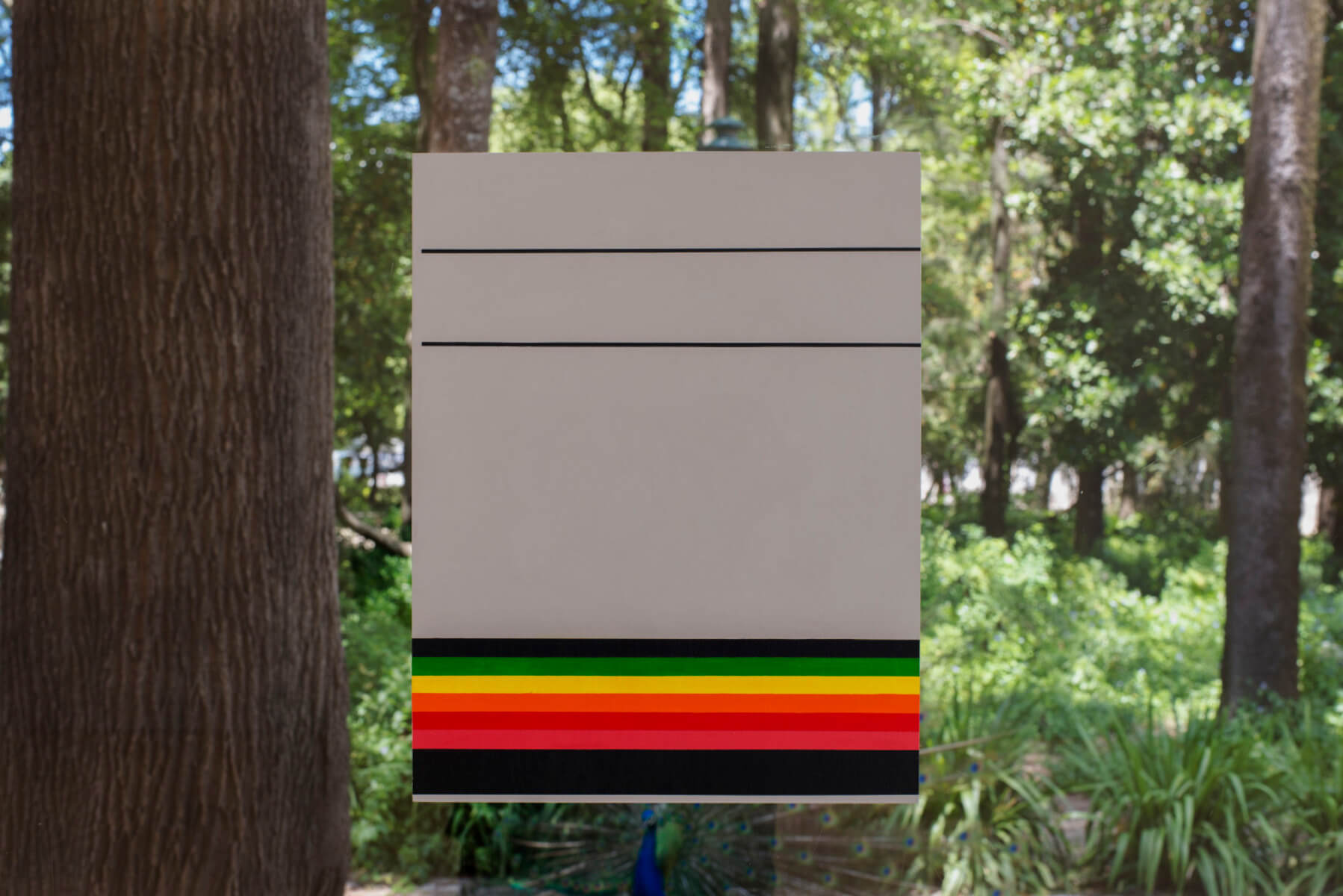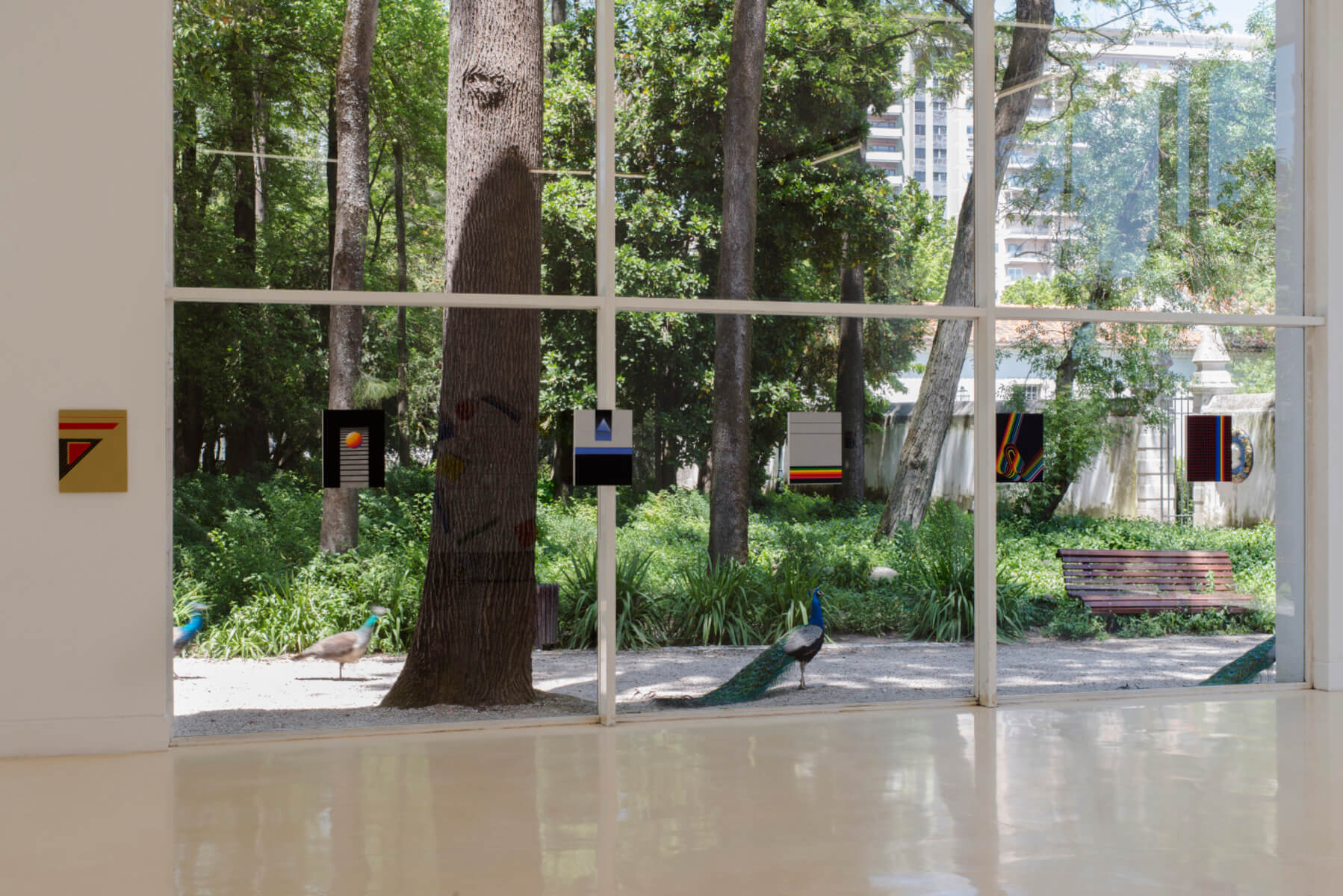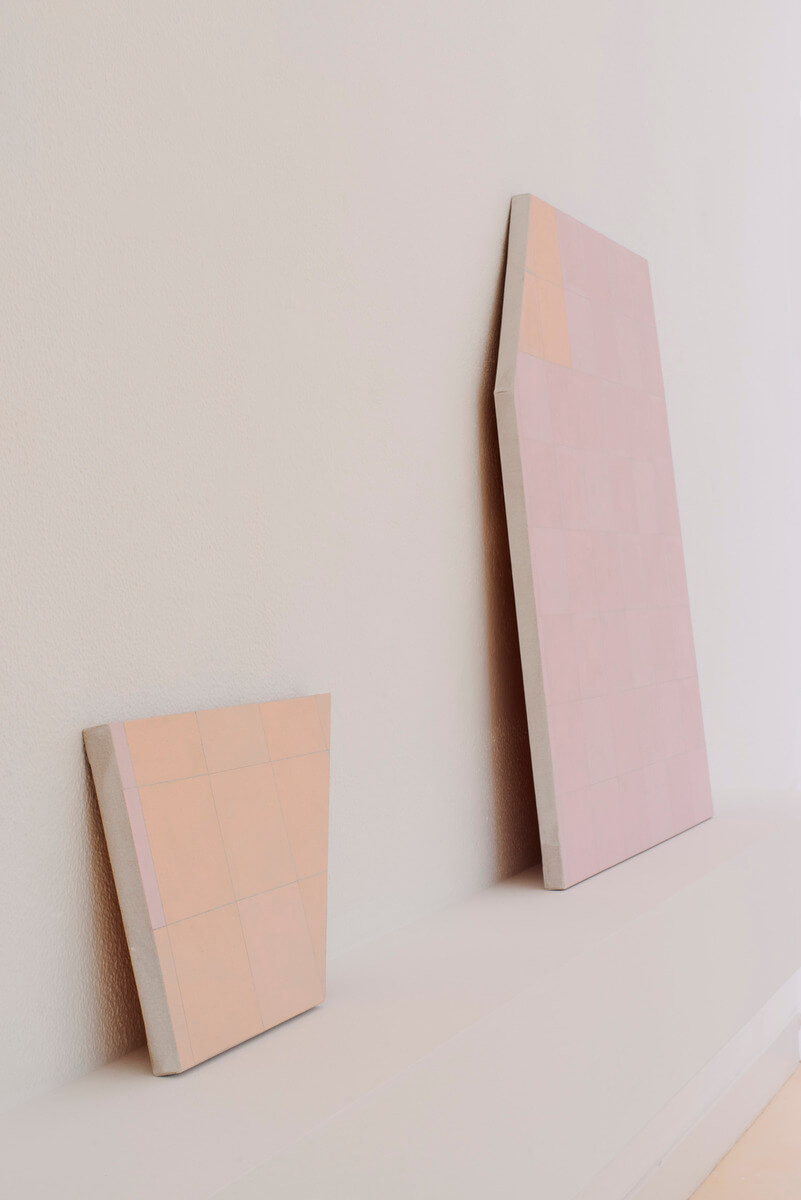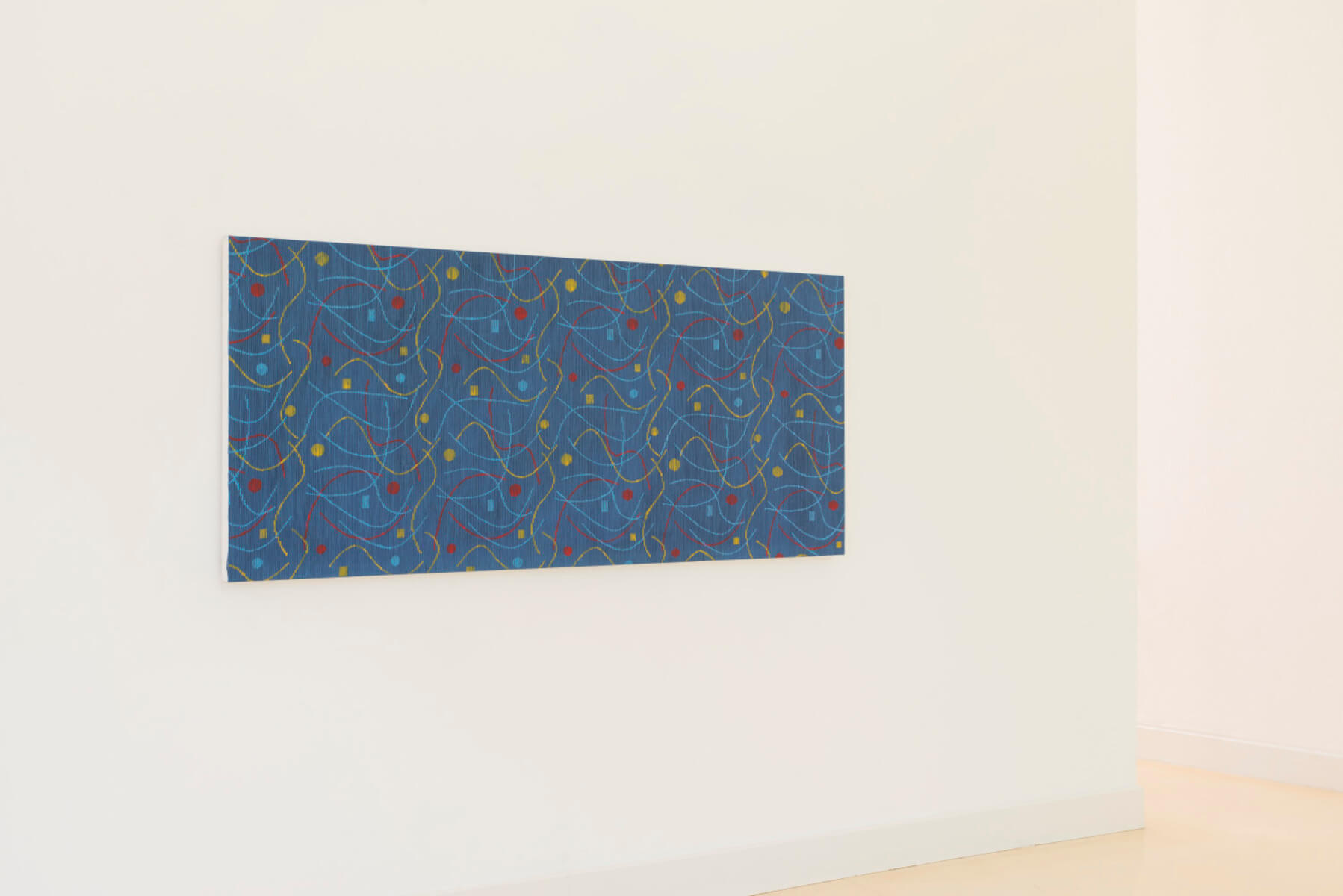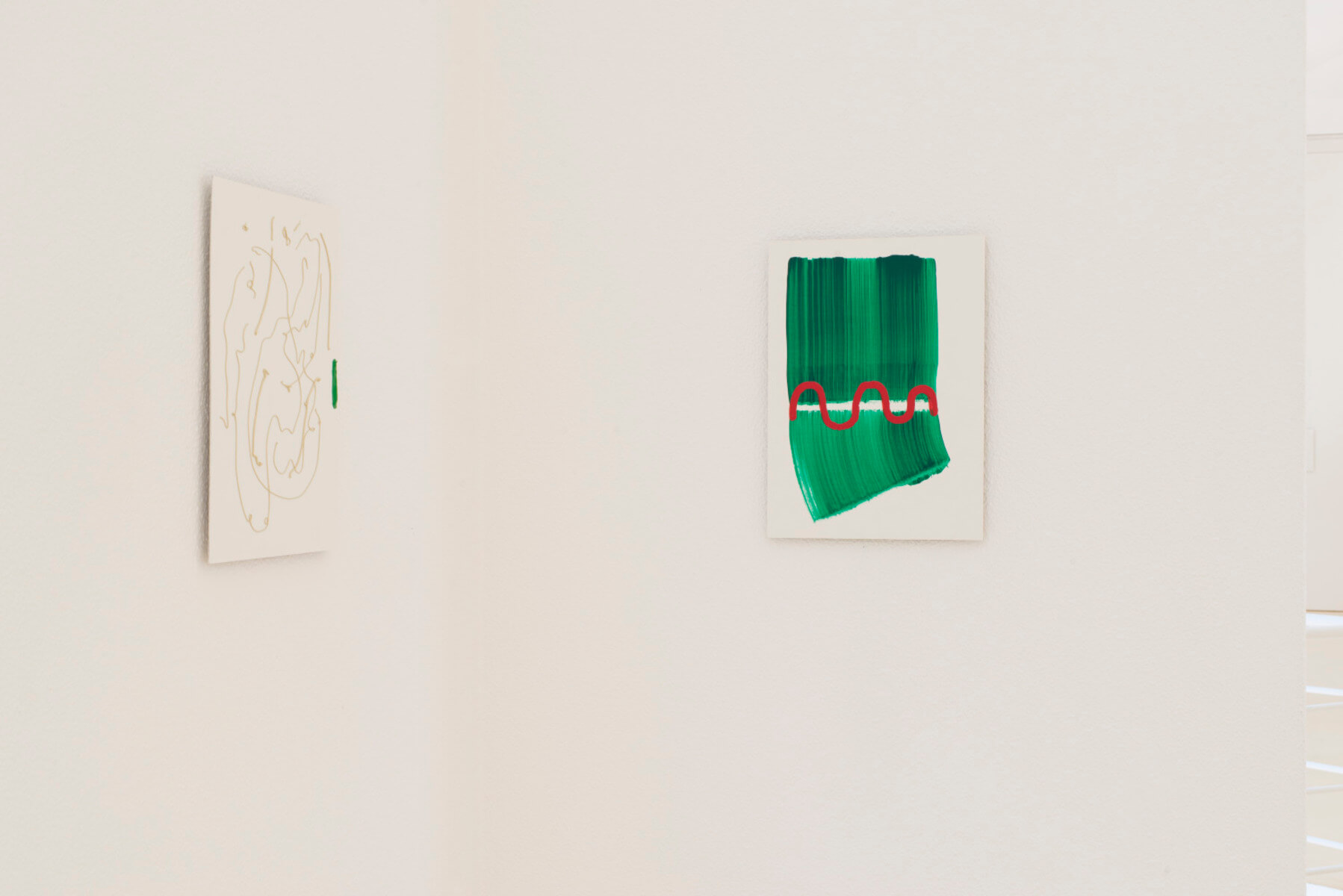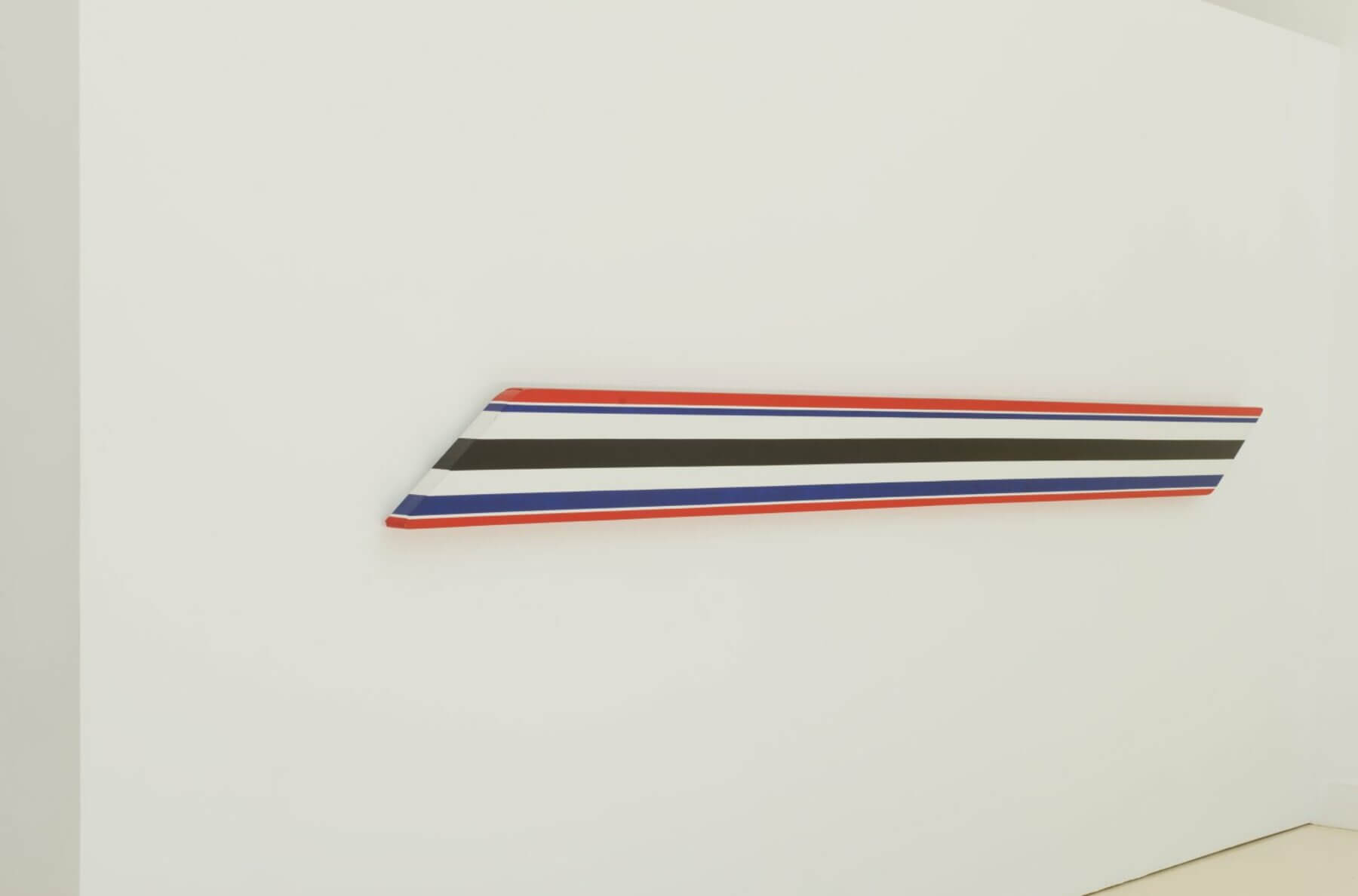– 30.09.2018
The Municipal Galleries are pleased to present João Marcal’s solo exhibition ‘INNER 8000er’ at Pavilhão Branco. Curated by Sara Antónia Matos and Pedro Faro, the exhibition is part of a program, which intends to promote the work of artists who have already established a career in the field of contemporary art.
‘INNER 8000er’ features a selection of paintings in various formats. Produced over the course of several years, some of the work on view are recent or new.
Presenting the world as a place of stereotyped images. Employing logos and patterns the images are repeated in an almost mechanic and circular way. Without apparent meanings or genuine functions, the artist manipulates and deconstructs these images – magnifying them, fragmenting them, turning them abstract through his painting and into optical challenges imposed on the gaze. Consisting of abstract forms, compositions and images, each one of his works implies an extraordinary challenge in the pursuit of iconography, bordering on the poetic limits of the absurd, where often art has something to say, to add and to reveal.
João Marçal chose the title ‘INNER 8000er’ for this exhibition. On planet Earth, there are 14 mountains over eight thousand meters high – the ‘Eight-thousanders’ –, all of them located in the Himalayas and in Karakoram, in Asia. Climbing them is a feat achieved by very few, because mountains over 8000 meters high are situated above what is called the vertical limit, in other words, the highest altitude at which a human being can survive. The scarcity of oxygen combined with low temperatures, strong winds and technical difficulties mean that ascents of this kind have a very low success rate and a high percentage of fatalities. Above 8000 meters, life is limited to a very, very short time, and few have managed to reach the summit of all these mountains.
One of the focuses of João Marçal’s recent work is, precisely, his growing interest for extreme-altitude climbing and mountaineering (Himalayism) – a passion, which is reflected in his work through the comparison that the artist establishes between the figure of the mountaineer and that of the artist. These two figures have in common the surrender to the unknown, the pursuit of an objective that doesn’t exactly have a palpable function or a concrete limit: the desire to get to hard-to-reach places, where supposedly we can’t or shouldn’t be, to challenge existence. The ‘mountain’ metaphor has already been used by the artist in a previous series, which combined references from painting with names from mountaineering. Beyond these analogies, the title ‘INNER 8000er’ points to a direct association between the idea of climbing and painting. According to the artist himself ‘there is always a layer in all of my work that refers to the concept of painting itself, almost like a genetic analysis of the medium, which is always present and intrinsic to the entire practice.’
For Marçal, the idea of an interior 8000-meter mountain, in other words, at the core of a human being, implies a ‘shock of dimensions. Despite ‘our complex and vast interior being’, the highest peaks of the Himalayas would never physically fit inside a person. Thus, we can say that this is a symbolic, psychological and conceptual kind of analogy, which offers the artist a challenge that is epistemological and pictorial in nature.
– How can an artist translate this vertiginous pursuit for the possibilities and impossibilities of painting in his work?
‘One of the points I have reflected and insisted on a lot recently is about the space(s) of painting. I am interested in the moment when it stops being a physical object in the place it occupies and becomes a space in another place, another thing, other things. We are also ‘‘bound’ to a physical evidence (body/thing) that influences our experiences and direction, but we are always much more than this, we are always in other places.’
Painting also has its own kind of ‘Inner 8000er’.
– Sara Matos and Pedro Faro, curators
– 30.09.2018

